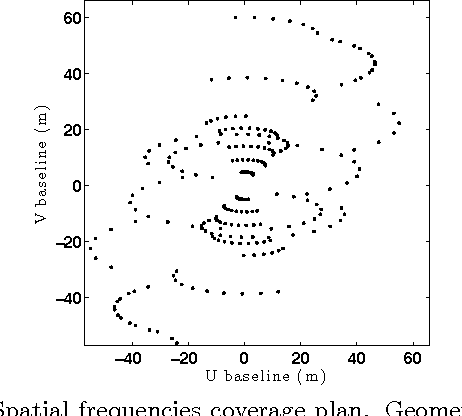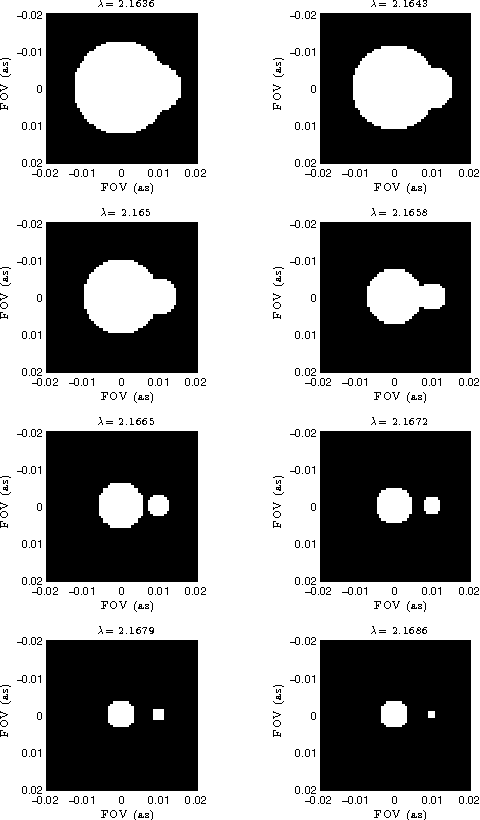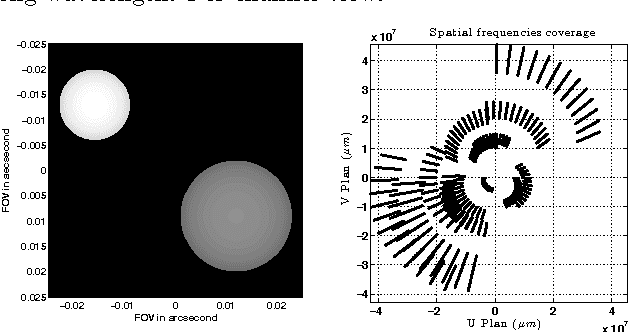Férréol Soulez
CRAL
Blind and robust reconstruction of adaptive optics point spread functions for asteroid deconvolution and moon detection
Oct 11, 2024Abstract:Initially designed to detect and characterize exoplanets, extreme adaptive optics systems (AO) open a new window on the solar system by resolving its small bodies. Nonetheless, despite the always increasing performances of AO systems, the correction is not perfect, degrading their image and producing a bright halo that can hide faint and close moons. Using a reference point spread function (PSF) is not always sufficient due to the random nature of the turbulence. In this work, we present our method to overcome this limitation. It blindly reconstructs the AO-PSF directly in the data of interest, without any prior on the instrument nor the asteroid's shape. This is done by first estimating the PSF core parameters under the assumption of a sharp-edge and flat object, allowing the image of the main body to be deconvolved. Then, the PSF faint extensions are reconstructed with a robust penalization optimization, discarding outliers on-the-fly such as cosmic rays, defective pixels and moons. This allows to properly model and remove the asteroid's halo. Finally, moons can be detected in the residuals, using the reconstructed PSF and the knowledge of the outliers learned with the robust method. We show that our method can be easily applied to different instruments (VLT/SPHERE, Keck/NIRC2), efficiently retrieving the features of AO-PSFs. Compared with state-of-the-art moon enhancement algorithms, moon signal is greatly improved and our robust detection method manages to discriminate faint moons from outliers.
* arXiv admin note: text overlap with arXiv:2407.21548
PAINTER: a spatio-spectral image reconstruction algorithm for optical interferometry
Sep 27, 2014



Abstract:Astronomical optical interferometers sample the Fourier transform of the intensity distribution of a source at the observation wavelength. Because of rapid perturbations caused by atmospheric turbulence, the phases of the complex Fourier samples (visibilities) cannot be directly exploited. Consequently, specific image reconstruction methods have been devised in the last few decades. Modern polychromatic optical interferometric instruments are now paving the way to multiwavelength imaging. This paper is devoted to the derivation of a spatio-spectral (3D) image reconstruction algorithm, coined PAINTER (Polychromatic opticAl INTErferometric Reconstruction software). The algorithm relies on an iterative process, which alternates estimation of polychromatic images and of complex visibilities. The complex visibilities are not only estimated from squared moduli and closure phases, but also differential phases, which helps to better constrain the polychromatic reconstruction. Simulations on synthetic data illustrate the efficiency of the algorithm and in particular the relevance of injecting a differential phases model in the reconstruction.
 Add to Chrome
Add to Chrome Add to Firefox
Add to Firefox Add to Edge
Add to Edge